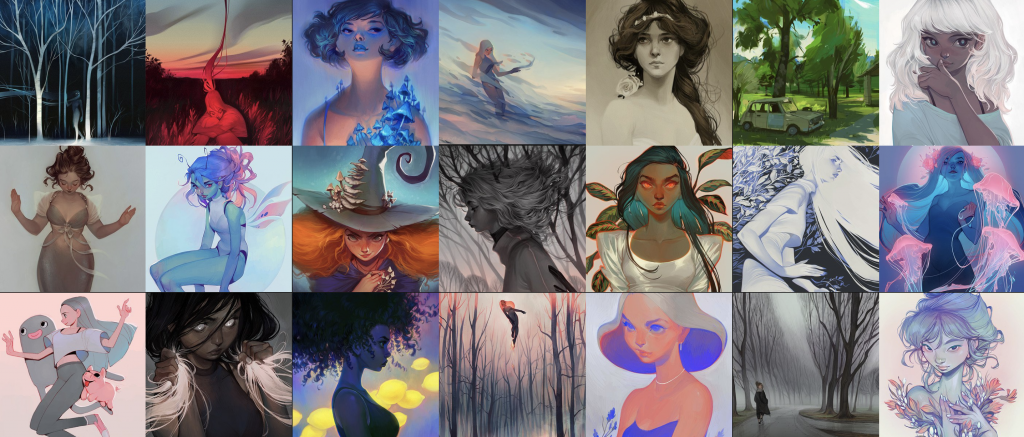Exclusive Interview: Lois Van Baarle (Loish)
 Lois Van Baarle is a freelance digital concept artist, illustrator, animator and character designer based in the Netherlands. Having started working on commissions since she was a student, she has since worked with clients like Guerrilla Games, Autodesk, Blizzard Entertainment and LEGO. With a tremendous online following, Van Baarle has also been successful in her personal work with 2 art books on the market, The Art of Loish and The Sketchbook of Loish, with a third one in the works.
Lois Van Baarle is a freelance digital concept artist, illustrator, animator and character designer based in the Netherlands. Having started working on commissions since she was a student, she has since worked with clients like Guerrilla Games, Autodesk, Blizzard Entertainment and LEGO. With a tremendous online following, Van Baarle has also been successful in her personal work with 2 art books on the market, The Art of Loish and The Sketchbook of Loish, with a third one in the works.
In this interview, she discusses various aspects of entrepreneurship as a freelance artist including how she leverages different social media, how she works with her clients and some of her biggest learning experiences on the job.
What was your first job as an artist and how did you approach it?
I think my first real job as an artist was to draw each of the horoscope signs as a female superhero character for a horoscopes website! I had already done a lot of commissions by that time – commissions are basically drawings made for individual people, usually featuring their original characters or portraits of themselves or their loved ones. I basically approached the job as I would have approached a commission: creating the artwork in steps (rough sketch, rough color, final version) and applying any feedback I got so that the final result was to the liking of the client!
I was drawing these while in animation school, so I was doing them on the side and planning them in whenever I had some free time. My first job after graduating from animation school was a series of short animated films for a television network here in the Netherlands, which I approached in more or less the same way: sending over rough versions, waiting for approval before proceeding, and delivering a final result that met the expectations of the client. I’m very structured when I work so it went quite smoothly, although the pay was quite low. Even though these projects were quite low-budget, I learned a lot from them!
As an artist who has a huge social media following, how do you leverage each of these platforms differently to promote yourself?
“ArtStation is great for targeting clients”
Each platform has different groups that are present on that platform, so I try to evaluate which groups are the most interesting to target. There’s a lot of aspiring artists and younger people on Instagram, which is great because my work appeals mostly to this group. I do a lot of knowledge sharing, in the form of tutorials, books, and workshops, so this fits well with this younger audience that has a strong desire to learn and grow. ArtStation is great for targeting clients, since a lot of companies browse ArtStation for inspiration, to create mood boards for their projects, and also to approach artists.
Aloy Concepts for Horizon Zero Dawn (Guerrilla Games)
Tell us about one of your favorite personal projects.
One of my favorite personal projects is my Trichrome animation short, which started as my graduation film from the Utrecht School of the Arts. I also want to create two more shorts for it. I loved working on it because it is a surreal story with a slightly dystopian feel – my favorite genres! I really like it when I challenge myself to go beyond what I usually do (digital paintings that don’t have much backstory) and feel inspired to create a whole story. That was really fun to work on and it’s really personal to me! I’d say it’s as close as I’ve come to developing an IP of my own. Hopefully I can find time to complete the series in the future!
What was one of your biggest learning experiences as an artist?
“You have to set clear boundaries as an artist and a freelancer.”
What is your creative and interactive process like when you work with clients on a project?
What do you think are some portfolio “must haves” as a freelance artist?
“It’s important not only to show your best pieces that you spent a lot of time on, but also your rough sketches, studies, speedpaints, and anything that conveys the first steps in your creative process.”
Different career paths require different portfolios, so there’s a lot of variety in what is needed. Animation portfolios are completely different from illustration or concept art portfolios. The main thing that I think is useful across most creative fields is to share your rough work and what you can do in a short amount of time.
Clients usually either have tight deadlines or a small budget and usually value artists who are efficient and make the best use of their time, so it’s important not only to show your best pieces that you spent a lot of time on, but also your rough sketches, studies, speedpaints, and anything that conveys the first steps in your creative process. What can you make if you only have a half hour, or an hour to make it? This is very useful for clients to see.
See more of Lois’s work on her ArtStation Website.



























